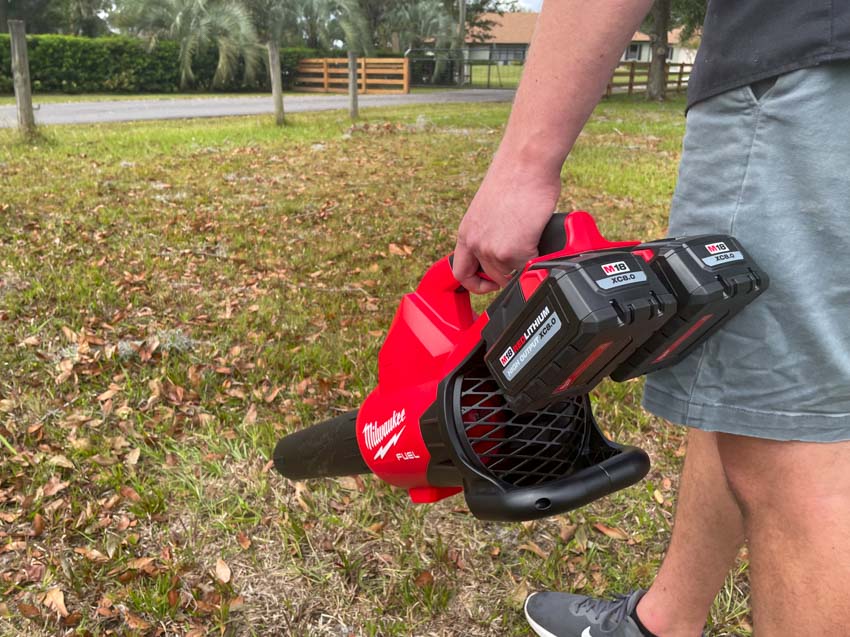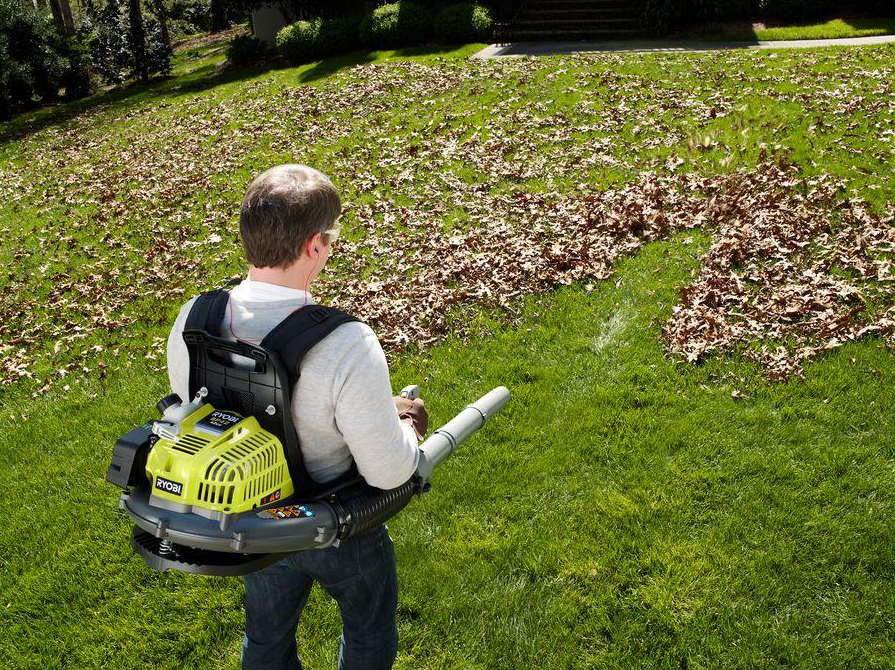When choosing between axial vs centrifugal blowers, plenty of factors might influence a final decision. Between brands, features, quality grade, noise levels, gas-powered or electric, corded or cordless, the list of considerations can be overwhelming. How does one find the perfect blower to suit their needs? There are plenty of resources available online and through retailers to help one sift through some of these considerations. But, how about narrowing it down a bit, shall we?
This article will aim at tackling one facet of the conversation, fan design. As far as blowers go, there exist two main fan designs: axial fans and centrifugal fans. Both options have merits, but which one works the best for your particular situation? Let’s take a look at the design of each.
The Axial Fan Design
Picture the box fan crammed in your window or the ceiling fan in your room. These common examples of axial fans pull air through the fan, parallel to the shaft the blades rotate on.
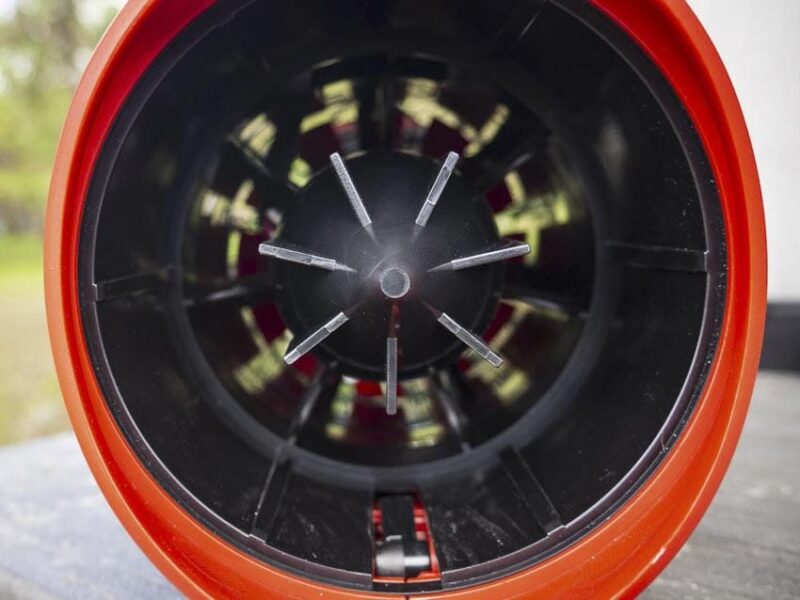
Axial fans (vs centrifugal fans) get their name from the direction of the airflow the fan creates. Fan blades rotate around an axis, forcing air out parallel to the axis. The blades of the fan spin around a central shaft, creating a difference in air pressure that provides the suction needed to move the air through the fan.
Axial fans have a high flow rate, but the airflow it creates has a low pressure. Axial fans work well for applications where a lot of air needs to be moved around. They require a lower amount of power to run than a centrifugal fan.
The Centrifugal Fan Design
The centrifugal fan operates a bit differently than the axial fan. Instead of pulling air through the fan parallel to the axis, the centrifugal fan moves air radially, from the center.
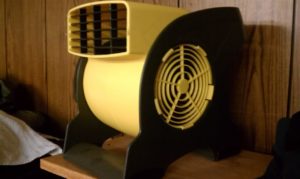
In a centrifugal system, the fan pulls air through a side intake. Blades mounted to the circular fan hub spin, essentially catching the incoming air and throwing it away from the hub at a 90° angle. Airflow is directed through a duct, which creates a higher pressure air flow than an axial fan, despite its lower flow rate. Centrifugal fans create a steadier flow of air, but also require more power to run.
Because of the higher pressure air flow that the centrifugal fan generates, you’ll find this fan design in many heating and cooling applications. They also function well for drying applications.
Axial vs Centrifugal Blowers Performance & Design
All this leads to how these two designs affect leaf blower builds, and the design utilized seems somewhat contingent upon how the blower is powered. Gas-powered blowers provide the most powerful leaf-blowing gusts, but they tend to be heavy and loud. Corded electric blowers don’t offer quite as much power as a gas-powered blower, but they’re lighter, quieter, and cleaner. And, although there has been a consistent improvement over the years with the power and runtime of cordless tools, battery-powered leaf blowers still lag behind their gas counterparts in terms of power. They are, however, lighter and quieter than gas blowers, and more convenient than corded blowers.
Corded electric blowers don’t offer quite as much power as a gas-powered blower, but they’re lighter, quieter, and cleaner. And, although there has been a consistent improvement over the years with the power and runtime of cordless tools, battery leaf blowers still lag behind their gas counterparts in terms of power. They are, however, lighter and quieter than gas blowers, and more convenient than corded blowers.
Gas-Powered Axial vs Centrifugal Blowers
Generally, gas-powered blowers will utilize a centrifugal fan design. Centrifugal fans require more power to run, but gas engines provide power in spades. And, a higher power requirement on the intake usually equates to more power generated on the other end too.
Professional-grade gas-powered motors tend to be mounted to a backpack-style harness. Air is sucked in through the motor on the back where the fan forces it through the duct. The air duct will wrap around the back of the user and under his arm. A flexible tube connects the output duct to the blower nozzle and throttle controls, giving the operator the ability to direct the direction and power of airflow.
These gas-powered blowers will find a lot of use from the professional landscaper, as well as from those who have large yards to maintain. They tend to be noisy and heavy, and they can be messy considering the gas and oil involved (although the mess, in this case, would probably have more to do with the operator). But, the power that they provide is indispensable when time equals money.
Cordless Electric Blowers
In contrast to the centrifugal design, cordless electric blowers will generally utilize an axial fan to provide blowing power. There are a few reasons for this. For one, available onboard space is an issue. With gas blowers, the engine generally straps to the operator’s back. But, one of the selling points of electric tools is their lightweight simplicity. The fan generally needs to fit into a one-handed setup. Although there are exceptions, in-line axial fans tend to be the accepted standard for cordless blower designs.
Axial fans also draw less power than centrifugal fans. Because cordless electric tools draw power from a battery, manufacturers will prioritize energy efficiency. This lets the tool do its job for a reasonable amount of time. Axial fan designs in cordless blowers sacrifice some blowing power, but they maximize fuel efficiency for the sake of run time.
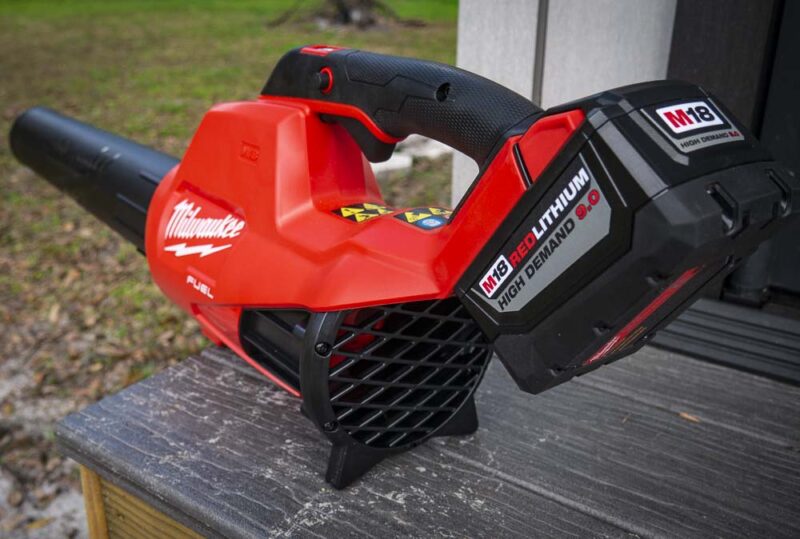
Although there are exceptions, in-line axial fans tend to be the accepted standard for cordless blower designs. They operate similarly to the way a jet engine functions, but in reverse. Take the Worx Turbine 56V Leaf Blower as an example; air gets sucked in through the back of the blower and ejected at high speed and pressure through the nozzle in the front.
Most homeowners with small to medium size yards will benefit from the cordless blower design. They start up quickly, they don’t have the fumes or mess that comes with gas-powered blowers, and they have adequate power and runtime for most landscaping applications. It is also worth noting that there are some more powerful, professional options in the greener, cordless world; see the DeWalt 40V Max Backpack Blower, for example.
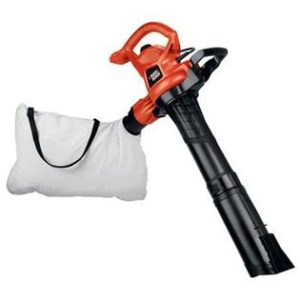
Corded Electric
Corded electric blowers also tend to implement the axial fan design, and for mostly the same reasons as the cordless varieties. There are a few benefits to corded blowers. Many corded blowers can function as a lawn vacuum and mulcher, as well as a blower.
Additionally, they usually cost a good deal less than the gas powered or cordless electric options. These are great for homeowners who have small yards, assuming that dragging around an extension cord is not too much of a bother.
Final Thoughts on Axial vs Centrifugal Blowers
For the professional, or even the serious lawn care enthusiast with a large property to manage, gas-powered blowers will probably be the preferred option. Gas blowers will provide more than enough to oomph to run the more powerful centrifugal fan. Run time is not as much an issue here as refueling costs might be, but the centrifugal fan design does provide enough power to get a large job done quickly.
For the average homeowner looking to keep his yard neat and tidy, an electric blower might be the ticket. The axial fan design will provide more than enough power to move grass clippings, leaves, sticks, and brush around. Instant start-ups, cordless convenience, and gasless operation outweigh any sacrifices on the power you’d have to make. And, battery tools have become efficient enough that, in a lot of cases, you ought to be able to squeeze between 15 to 20 minutes of continuous runtime on a single charge.
For those looking for a multi-function blower/mulcher/vacuum, the axial fan in corded tools might provide the most functionality. Considering the extension cord issue, this option probably only works out best for people with smaller lawns to manage. This model usually costs a good deal less than the other two options, however, which might outweigh the annoyance of dragging around a cord.
So, which fan design will work best for you? The answer to the great question of axial vs centrifugal blowers will most likely revolve around your particular application. Perhaps the fan design probably won’t even be the determining factor when considering your next lawn blower. Because fan designs are almost particular to the power source, maybe the better question is whether battery or gas better suits your needs.

